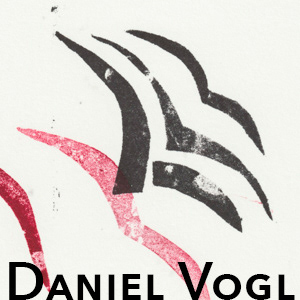The private in the public - Family Archive from the 20th & 21st century and it’s relevance in a photography consuming culture
Why do we picture our close environment?
The first steps into the home:
George Eastman democratised photography in the year of 1899. “You press the button, we do the rest” was the marketing slogan for their camera “Box Brownie”. It was the camera for your home. You didn’t need a tripod, glass plates or chemistry. You pressed the button, snapped a photo and as soon as the film was full, you sent the camera back to Kodak. They developed and printed the pictures for you. Alongside the images you received your camera with a new film loaded, ready to go (cf. Holland, 2010).
Now, over one hundred years later, we can share our images with one touch on the screen of our smartphones. Almost every phone has a camera built in nowadays. With a working internet connection we can share our intimate and personal moments with anybody we like. Distributing images without a newspaper or editorial is now possible. We can share them on a private base, sending pictures directly to people we choose. Or we can share them publicly on websites, on blogs or on social media platforms like Instagram or Snapchat.
We can discover images from our long passed away relatives and scan them. We can use those pictures in connection with the photographs we shoot today and create a multi time layered story about our family, for example. In this moment in time we have access to many photographs, public ones as well as photographs from our families in photo albums. So we have a camera in our pocket and due to technology we have access to photo archives, public and private ones. What can we do with all those images? What can we photograph in our homes? We photograph our daily life. We take pictures on holidays, on special occasions, trips, friends, of our family. We present ourself in the pictures how we want to be seen. We want to be represented by the picture and the photographer. Photography becomes an act, that is interwoven in our daily life. We make pictures of our daily life and at the same time picture making becomes our daily life (cf. Holland, 2010).
Patricia Holland differs between a ‘user’ and a ‘reader’ of personal pictures based on Basil Bernstein’s analysis of elaborated and restricted codes. ‘Users’ understand and know the context of private photographs in their world. Their own photographs are part of their memories and have meaning in their daily lives. ‘Readers’ must decode the meaning of those private and or historical images. They need to investigate and keep looking into the images, in order to translate the private into the public and find the meaning and purpose behind the pictured surface. For the ‘reader’ the images can appear to be historical or aesthetic on the first glance. But with further observation they might find traces in the pictures they can relate to and find meaning behind it. They act like historians, who precisely examine those images in order to get a understanding of the situation in the photograph, the time it was taken in or the relationship between the pictured people, if it is a group portrait for example. Due to the fashion of people in those photographs you might conclude the occasion the picture was take in or the people’s attitude towards cloths and maybe the social class the group acts within. So if you take a look at a family image from the 1950s you need to have a understanding and the knowledge of that time to be able to interpret those signs in the image properly (cf. Holland, 2010).
So for whom are those private pictures? For those who capture them and maybe for those who are pictured in the images. But the interest goes further than just the private eye.
When photographers are working with archives and personal/private material in their projects, the audience becomes quite public. One example is the American artist Larry Sultan and his work “Pictures From Home”, first published in 1992. It is a photo project about his parents and his childhood. He uses still images from super 8 home movie scenes from his childhood days and combines them with contemporary images of his parents at their home in Southern California. The text layer is based on conversations from those movie scenes (cf. Mack, 2019). “The result is a narrative collage in which the boundary between the documentary and the staged becomes increasingly ambiguous”. (Mack, 2019)
George Eastman democratised photography in the year of 1899. “You press the button, we do the rest” was the marketing slogan for their camera “Box Brownie”. It was the camera for your home. You didn’t need a tripod, glass plates or chemistry. You pressed the button, snapped a photo and as soon as the film was full, you sent the camera back to Kodak. They developed and printed the pictures for you. Alongside the images you received your camera with a new film loaded, ready to go (cf. Holland, 2010).
Now, over one hundred years later, we can share our images with one touch on the screen of our smartphones. Almost every phone has a camera built in nowadays. With a working internet connection we can share our intimate and personal moments with anybody we like. Distributing images without a newspaper or editorial is now possible. We can share them on a private base, sending pictures directly to people we choose. Or we can share them publicly on websites, on blogs or on social media platforms like Instagram or Snapchat.
We can discover images from our long passed away relatives and scan them. We can use those pictures in connection with the photographs we shoot today and create a multi time layered story about our family, for example. In this moment in time we have access to many photographs, public ones as well as photographs from our families in photo albums. So we have a camera in our pocket and due to technology we have access to photo archives, public and private ones. What can we do with all those images? What can we photograph in our homes? We photograph our daily life. We take pictures on holidays, on special occasions, trips, friends, of our family. We present ourself in the pictures how we want to be seen. We want to be represented by the picture and the photographer. Photography becomes an act, that is interwoven in our daily life. We make pictures of our daily life and at the same time picture making becomes our daily life (cf. Holland, 2010).
Patricia Holland differs between a ‘user’ and a ‘reader’ of personal pictures based on Basil Bernstein’s analysis of elaborated and restricted codes. ‘Users’ understand and know the context of private photographs in their world. Their own photographs are part of their memories and have meaning in their daily lives. ‘Readers’ must decode the meaning of those private and or historical images. They need to investigate and keep looking into the images, in order to translate the private into the public and find the meaning and purpose behind the pictured surface. For the ‘reader’ the images can appear to be historical or aesthetic on the first glance. But with further observation they might find traces in the pictures they can relate to and find meaning behind it. They act like historians, who precisely examine those images in order to get a understanding of the situation in the photograph, the time it was taken in or the relationship between the pictured people, if it is a group portrait for example. Due to the fashion of people in those photographs you might conclude the occasion the picture was take in or the people’s attitude towards cloths and maybe the social class the group acts within. So if you take a look at a family image from the 1950s you need to have a understanding and the knowledge of that time to be able to interpret those signs in the image properly (cf. Holland, 2010).
So for whom are those private pictures? For those who capture them and maybe for those who are pictured in the images. But the interest goes further than just the private eye.
When photographers are working with archives and personal/private material in their projects, the audience becomes quite public. One example is the American artist Larry Sultan and his work “Pictures From Home”, first published in 1992. It is a photo project about his parents and his childhood. He uses still images from super 8 home movie scenes from his childhood days and combines them with contemporary images of his parents at their home in Southern California. The text layer is based on conversations from those movie scenes (cf. Mack, 2019). “The result is a narrative collage in which the boundary between the documentary and the staged becomes increasingly ambiguous”. (Mack, 2019)
Image 1 and 2 by Larry Sultan:
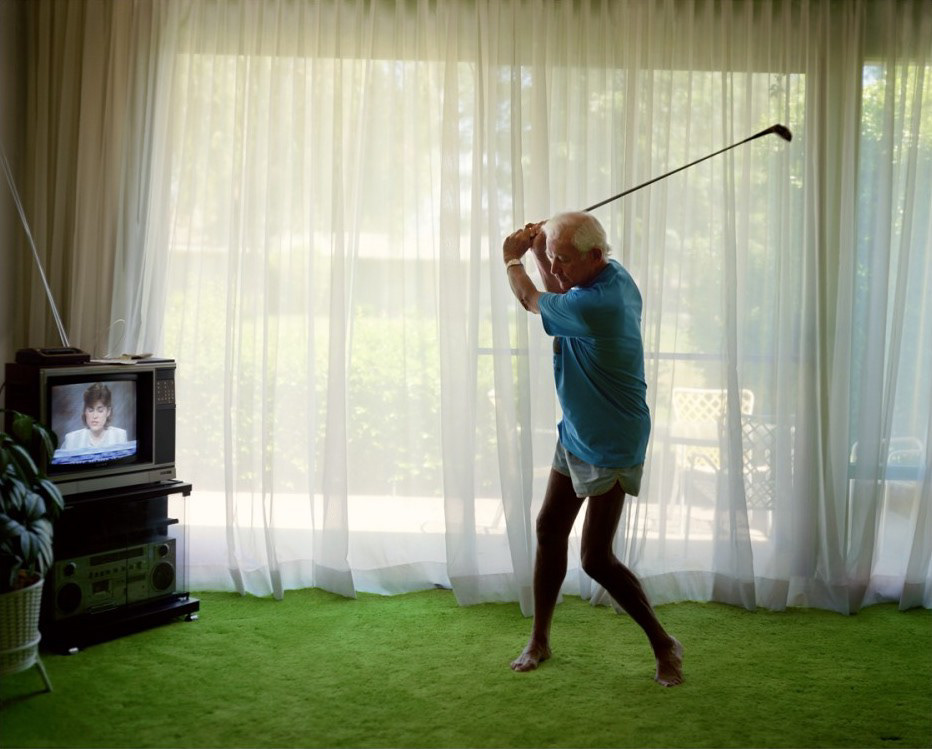
Practicing Golf Swing / 1986
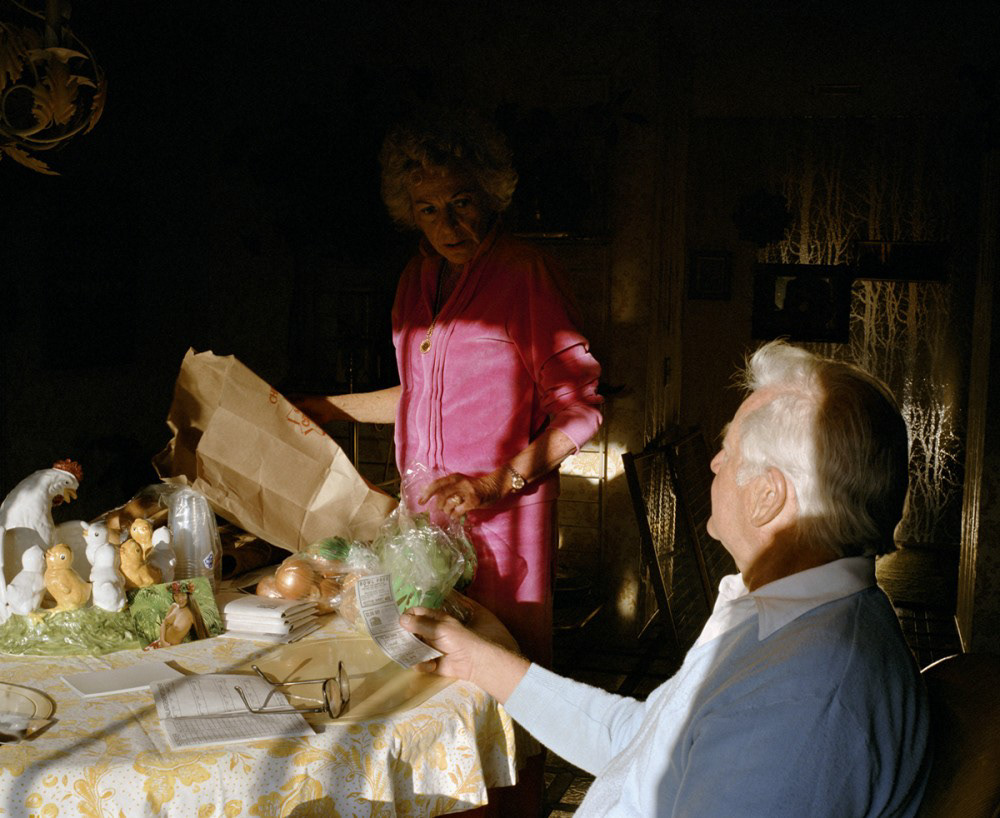
Discussion, Kitchen Table / 1985
With the modernisation of Western culture photography evolved to a medium where creators could explore and express their individuality. With the consumer based economy of the twentieth century the forms of expression became a more individual manner and it is about our pleasures, that we define and develop. It has become popular to scan personal pictures and pictures from the family albums and archives. Due to the family photographs being a non serious practice we look for the trivial in our lives and take pictures from it (cf. Holland, 2010).
The living experience
Holland claims that in the twentieth- and twenty-first-century the private photographs are our living memory. We can relate to those images directly and our memories are those, that are shown in the images. Every family photo collection is different and unique, therefore we need the context and circumstances regarding every collection. They are the self made history of the families, who are still alive today. We can see our own past in the images and relate to those more than we do to the ones of our grandparents. Despite of the emotional attachment, we, as a reader of those images, need to see the pictures an a semiotical level and interpret the cultural or social codes in the photographs.
Maybe also because of Kodak’s act of democratising photography, it was possible that different people than traditional educated historians recorded and wrote about history. The working class, minority groups, women, just to name a few, brought their own perspective into account regarding the understanding of history concerning everyday snapshots. They captured and represented their daily life and used photography to create their history. So people, who are normally overlooked in history, now had their own voice. Over time they developed a sort of community history, of different social groups in different regions (cf. Holland, 2010).
For example Nan Goldin’s subjects were the ones, who were close to her. “Transsexuals, cross-dressers, drug users, lovers, all people she befriended when she moved to New York after her sister’s suicide, a succession of foster homes and struggles with parents she rejected as conformists.” (Silverman, 2019) She photographed her social community and they were also her family.
Image 3 and 4 by Nan Goldin:
The living experience
Holland claims that in the twentieth- and twenty-first-century the private photographs are our living memory. We can relate to those images directly and our memories are those, that are shown in the images. Every family photo collection is different and unique, therefore we need the context and circumstances regarding every collection. They are the self made history of the families, who are still alive today. We can see our own past in the images and relate to those more than we do to the ones of our grandparents. Despite of the emotional attachment, we, as a reader of those images, need to see the pictures an a semiotical level and interpret the cultural or social codes in the photographs.
Maybe also because of Kodak’s act of democratising photography, it was possible that different people than traditional educated historians recorded and wrote about history. The working class, minority groups, women, just to name a few, brought their own perspective into account regarding the understanding of history concerning everyday snapshots. They captured and represented their daily life and used photography to create their history. So people, who are normally overlooked in history, now had their own voice. Over time they developed a sort of community history, of different social groups in different regions (cf. Holland, 2010).
For example Nan Goldin’s subjects were the ones, who were close to her. “Transsexuals, cross-dressers, drug users, lovers, all people she befriended when she moved to New York after her sister’s suicide, a succession of foster homes and struggles with parents she rejected as conformists.” (Silverman, 2019) She photographed her social community and they were also her family.
Image 3 and 4 by Nan Goldin:

“Amanda crying on my bed, Berlin, 1992.”
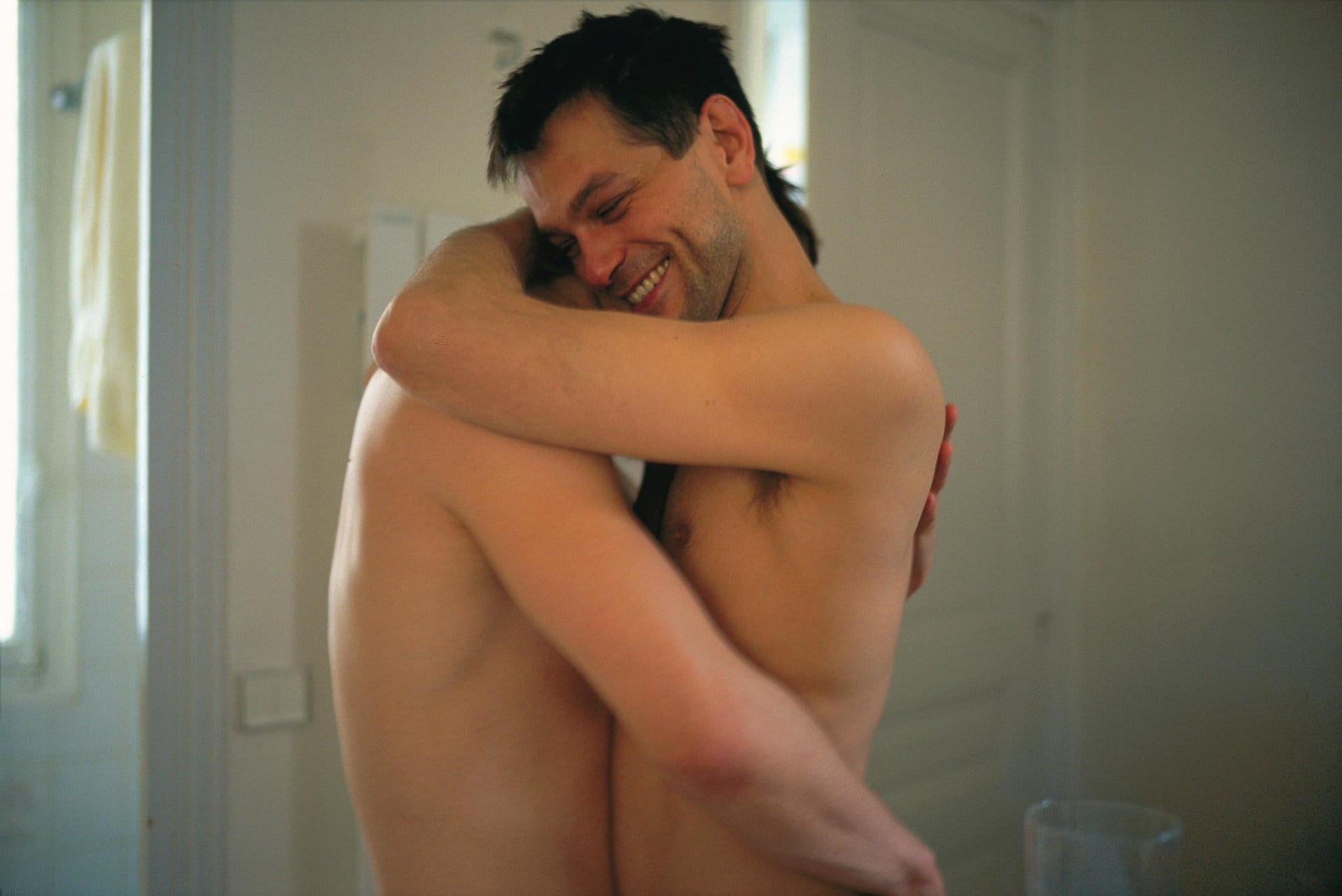
“Jens and Clemens embracing, Paris, 2001.”
By publishing those images she rose awareness for her social community and the struggles they had in their lives. She showed her own personal history that is interweaved with the history of her community, that also functions as her family. So her private history tells you how it was for her from the 1980s to the 2000s in New York City, inside a certain community (cf. Silverman, 2019).
The home in galleries
In the photobook “Immediate Family” from 1992, Sally Mann portrays her family life in her summer home in Virginia. The pictures mostly show her children. It is controversial received because in a lot of pictures she images her kids naked. The scenes appear like every day life scenes, though they might be staged due to her use of a large format camera, that slows down the working process. Despite of her work, using her kids for her commercial success, she is able to present them in a respectful manner and when looking at the pictures you see the dignity in the kid’s eyes. They are pretty aware of how they appear on the photographs of their mother (cf. Aperture, 2019).
The home in galleries
In the photobook “Immediate Family” from 1992, Sally Mann portrays her family life in her summer home in Virginia. The pictures mostly show her children. It is controversial received because in a lot of pictures she images her kids naked. The scenes appear like every day life scenes, though they might be staged due to her use of a large format camera, that slows down the working process. Despite of her work, using her kids for her commercial success, she is able to present them in a respectful manner and when looking at the pictures you see the dignity in the kid’s eyes. They are pretty aware of how they appear on the photographs of their mother (cf. Aperture, 2019).
Image 5 and 6 by Sally Mann:
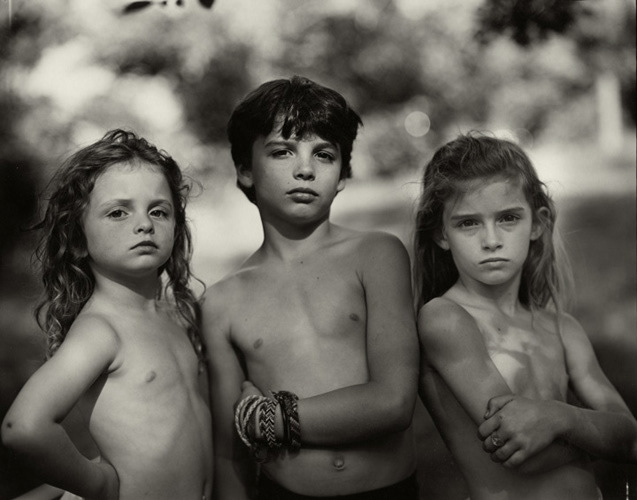
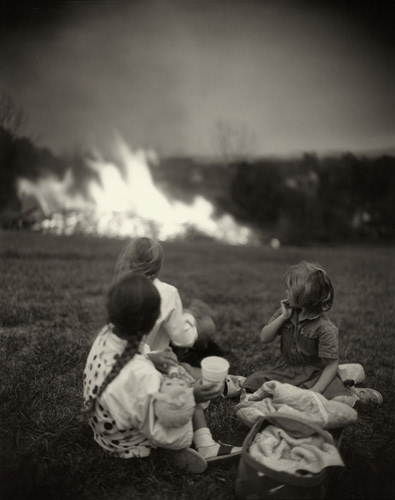
This maternal view upon the family is validated in both the art world, as well as in private photography. The pictures of Sally Mann may appear to be very private but they are consciously produced for a public viewer. So they differ from the family snapshots, that are produced to capture a moment in the family and the only purpose is to document the family life and glue the pictures in a family album. Furthermore they challenge the boundaries between the private and the public and their purpose is to be read by the public. Maybe because those kinds of pictures arise from a very intimate and personal environment, they are accessible to a broad audience. Today, where almost everybody has a camera built in his or her smartphone, those photographs by working photographers seem to idealize and romanticize the family snapshots, never the less, the accessibility is easy, because we are used to family pictures and we make them ourselves.
If I would present my family pictures to a wider audience, would they also be received in an art environment? Maybe if the quality, the composition, the general look of the images, the story behind it work together, so they form a coherent approach to the topic of family photographs and reflect on all those aspects. Maybe, it will also depend on the work you have done before, how “successful” you are as a photographer, how well your are known, have you been exhibited before, is your name familiar, which people do you know in the art field, et cetera. This might apply to photographic works in general. There needs to be a broader interest in your topic, a story a lot of people are interested in watching, that you may reach an audience like Sally Mann does.
Where do we go from here?
Nearly 200 years have passed, since the first surviving image was fixated. 120 years have passed, since Kodak introduced photography to the domestic and private environment. The western two-parent, two-children family model is long overdue. Multiple variations of a family model exist and may have been existing for a long time (cf. Holland, 2010). I think it is revealing that most social communities, families and individuals have the ability to reflect on their personal living conditions in their environments through the medium of photography. Everyone, who is willing to in the art field or outside of it, has his/her own perspective and uses the medium photography in a different way. For me the appealing approach in image work circulating various families is, that I can relate to the construct of a social environment. The access to those works may vary, but the ground structure of human relations is maintained. Therefore I can see the quality of creating a connection between different viewing groups, that are interested in such photographic works. Not all personal and family based work needs to be put on a wall. It can also be a simple, little book. Like a family album.
If I would present my family pictures to a wider audience, would they also be received in an art environment? Maybe if the quality, the composition, the general look of the images, the story behind it work together, so they form a coherent approach to the topic of family photographs and reflect on all those aspects. Maybe, it will also depend on the work you have done before, how “successful” you are as a photographer, how well your are known, have you been exhibited before, is your name familiar, which people do you know in the art field, et cetera. This might apply to photographic works in general. There needs to be a broader interest in your topic, a story a lot of people are interested in watching, that you may reach an audience like Sally Mann does.
Where do we go from here?
Nearly 200 years have passed, since the first surviving image was fixated. 120 years have passed, since Kodak introduced photography to the domestic and private environment. The western two-parent, two-children family model is long overdue. Multiple variations of a family model exist and may have been existing for a long time (cf. Holland, 2010). I think it is revealing that most social communities, families and individuals have the ability to reflect on their personal living conditions in their environments through the medium of photography. Everyone, who is willing to in the art field or outside of it, has his/her own perspective and uses the medium photography in a different way. For me the appealing approach in image work circulating various families is, that I can relate to the construct of a social environment. The access to those works may vary, but the ground structure of human relations is maintained. Therefore I can see the quality of creating a connection between different viewing groups, that are interested in such photographic works. Not all personal and family based work needs to be put on a wall. It can also be a simple, little book. Like a family album.
Sources:
Aperture Foundation; Books: Mann, Sally – Immediate Family, 2019; https://aperture.org/shop/books/sally-mann-immediate-family-book (accessed 3rd Dezember 2019)
Holland, Patricia; ‘Sweet it is to scan …’ Personal photographs and popular photography; In: Wells, Liz (ed.) Photography – A critical introduction, 4th ed, London, Routledge, 2010, p. 119-164.
Aperture Foundation; Books: Mann, Sally – Immediate Family, 2019; https://aperture.org/shop/books/sally-mann-immediate-family-book (accessed 3rd Dezember 2019)
Holland, Patricia; ‘Sweet it is to scan …’ Personal photographs and popular photography; In: Wells, Liz (ed.) Photography – A critical introduction, 4th ed, London, Routledge, 2010, p. 119-164.
Mack Books; Sultan, Larry: Pictures from Home, 2019; https://mackbooks.co.uk/products/pictures-from-home-br-larry-sultan?_pos=1&_sid=246737072&_ss=r (accessed 30rd November 2019)
Mann, Sally; Selected Works: Family Pictures, 2019; https://www.sallymann.com/new-gallery-1/ (accessed 3rd Dezember 2019)
Silverman, Rena; Nan Goldin Looks Back at Friends and Lovers; Lens – The New York Times, 2007; https://lens.blogs.nytimes.com/2017/12/05/nan-goldin-looks-back-at-friends-and-lovers/ (accessed 15th Dezember 2019)
Sultan, Larry; Work: Pictures From Home, 2019; http://larrysultan.com/gallery/pictures-from-home/ (accessed 3rd Dezember 2019)
